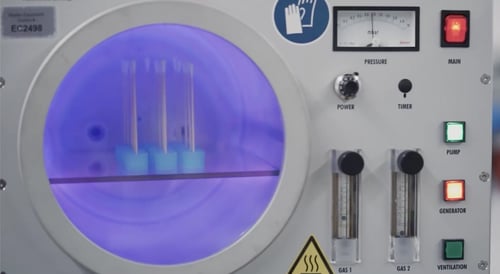HF etching is a form of wet etching that uses hydrofluoric acid to etch out surfaces rather than using a dry plasma process.
HF etching is capable of etching materials such as amorphous silicon dioxide; quartz and glass at very high etch rates. Since
HF etching is a wet process, meaning that it uses chemicals, it creates an
isotropic etch. This means that there are curved etched out sections under the etching mask. This is usually not a desirable result because most microfabrication processes require anisotropic etches that
plasma etching is capable of achieving.
Buffered HF Etching
Buffered
HF etching is a commonly used technique in microfabrication. Buffered
HF etching, also known as Buffered Oxide etching, uses a mixture of a buffering agent like ammonium fluoride and hydrofluoric acid. Adding the buffering agent to the
HF etchant allows for a more precise etch. Regular
HF etching reacts too quickly for good control and causes the photoresist etching mask to peel. Buffered
HF etching is predominantly used for etching wafers of silicon dioxide or silicon nitride as a part of the integrated circuit fabrication process.

